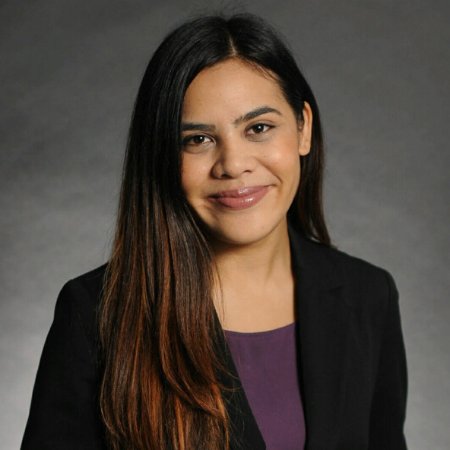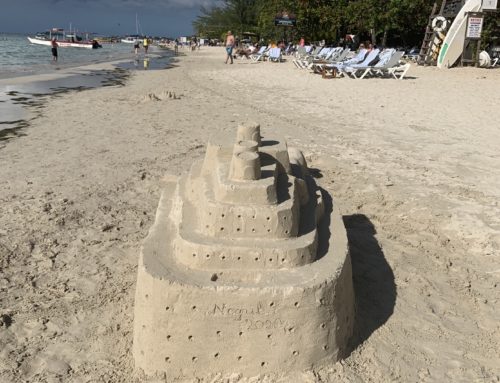 Guest Post by Danielle Heiny
Guest Post by Danielle Heiny
We live in a digital world, where technology is quickly evolving and the channels of communication are widening, but the tech spectrum varies across the nation and around the globe as a result of generational divides, gaps in access, and cultural preferences.
If you’re introducing a product or service to a new region or target group, be prepared to endure growing pains that come with reaching new heights. Although you might not be starting from scratch, keep in mind that the chances of a “one size fits all” model will produce the results you seek are slim to nonexistent.
For example, a social media campaign which is effective in France may not be well received in Singapore. The successful email marketing techniques you use for your His-panic audiences, won’t get nearly the same traction when applied in the Middle East.
If you’re struggling with your digital campaign efforts then try a few “ghosts of technology past” that I’ve had some luck in.
Pick up the phone.
Imagine a status report spreadsheet full of subject matter experts who are slated to speak at your upcoming conference. It’s beautiful, except not a single line item is checked for those based in Le Maghreb, which is Morocco, Algeria, and Tunisia.
It’s now been months, so additional email communications are followed up with phone calls. Those calls start at once a week then snowball into twice, and eventually every day.
More months pass and still no contact, until *one day*, *one person* picked up. A three-minute call concluded with a single request that changed the entire game.
Send a fax.
That was her request! “Send everything you need from us and all future communications via fax.”
And it worked! So what did I do next? I went digging to find the fax numbers of each missing speaker from that region. Then proceeded to print each email and sent it via the fax machine.
The fax replies soon came flooding in!
Can you believe, that in that *one* moment, *one* person expressed which mode of communication to reach her, which turned out to be the solution for my problem area target group? What a beautiful ripple effect that created!
Take Away #1: Investigate by making phone calls, listen, act accordingly, and experiment to see if a trend follows.
Print and ship.
Same conference. Different region. Different problem.
Attendance numbers weren’t where we wanted for the Middle East, despite pulling our usual email marketing and social media tricks. We opted for plan B – a print campaign with personalized letters and brochures.
Our numbers improved slightly, but not significantly, so we decided to…
Spread the word, the old-fashioned way.
In a recent training for Shonali’s private Social PR Pioneers group (you can only opt in if you’re already in her Master Course, btw), Nike’s Fabio Tambosi said that social media is the modern day “word of mouth.” Although that’s very true, there are times when talking to individuals face-to-face prove to be more effective.
In order to get those attendee numbers up, we reached out to both our members and partners who were on-the-ground, asking if they could tell people about the conference. We also sent over hard copy promotional material for them to showcase in their offices and share with their contact.
We let the magic happen. Word traveled fast and with some time to spare, registration goals were met!
Take Away #2: Think outside the box, repurpose material, leverage your networks, and try, try again until a concept gets the levers moving.
If none of the above enhances your efforts, then perhaps your campaign isn’t as “solid” as you think.
Take Away #3: Conduct a Social PR audit, because it may just be what you need.
What “ghosts of technology past” have you employed recently to breath new life into your campaign efforts? Please share in the comments below.
Image: Lukas Blazek via Unsplash, Creative Commons CC0
 Danielle Heiny is a success-oriented brand manager, who helps mission-driven organizations achieve explosive growth by harnessing brand potential, connecting the dots, and optimizing bottom-line results. Based in Washington, DC, she’s worked with the U.S. Department of Education, the International Chamber of Commerce, and a variety of nonprofits, government agencies, and international organizations. To learn more about Danielle, connect with her on LinkedIn or Twitter and check out her blog on branding, empowerment, and cross-cultural communication.
Danielle Heiny is a success-oriented brand manager, who helps mission-driven organizations achieve explosive growth by harnessing brand potential, connecting the dots, and optimizing bottom-line results. Based in Washington, DC, she’s worked with the U.S. Department of Education, the International Chamber of Commerce, and a variety of nonprofits, government agencies, and international organizations. To learn more about Danielle, connect with her on LinkedIn or Twitter and check out her blog on branding, empowerment, and cross-cultural communication.









[…] Communication at the speed of technology is a very good thing. It gives us options and efficiencies we never had before. But maybe we need to slow down, take a breath and decide if that speed and efficiency is always the best option or do we need to go a little old-school to get the results we really want. […]